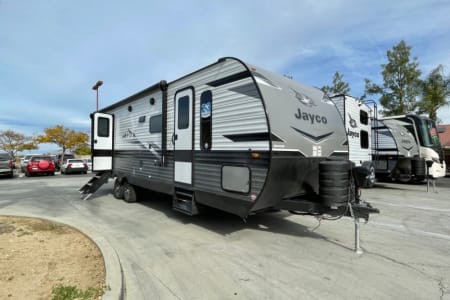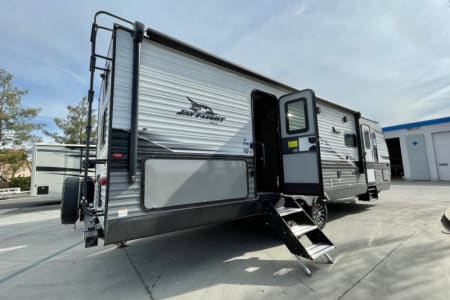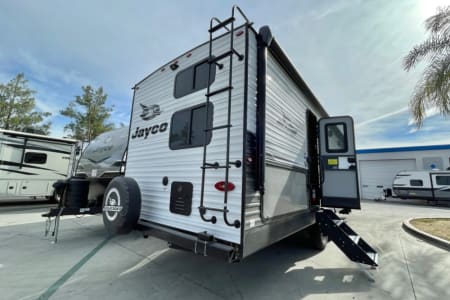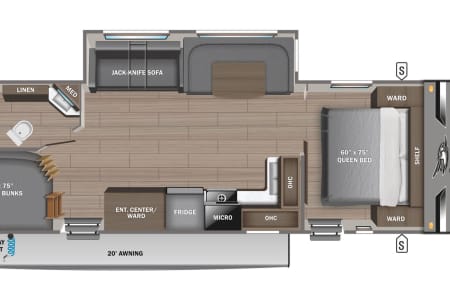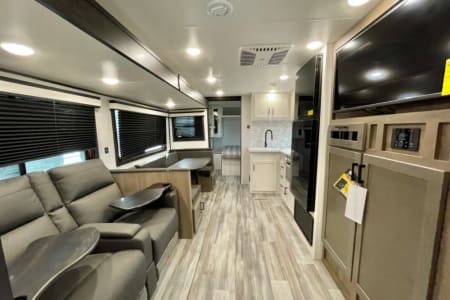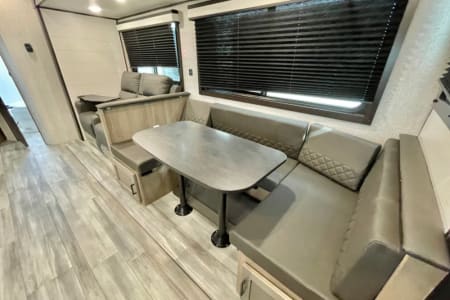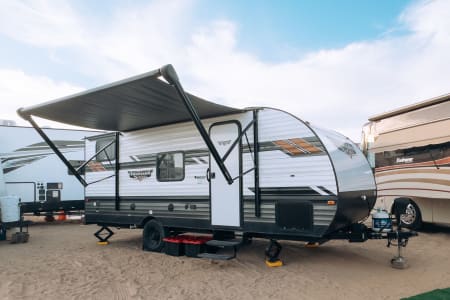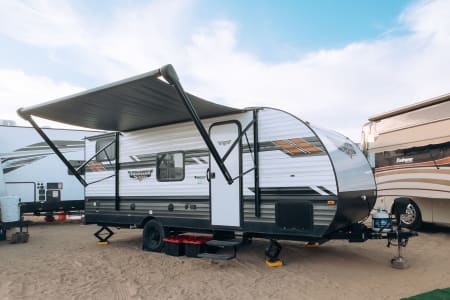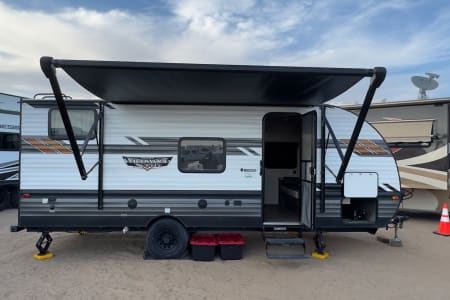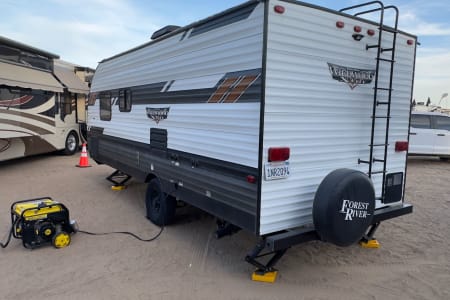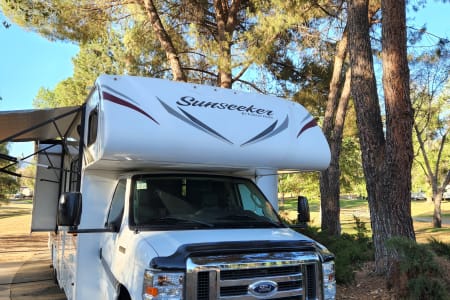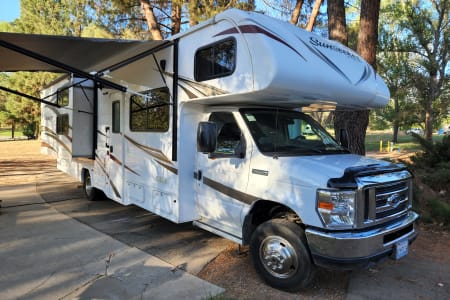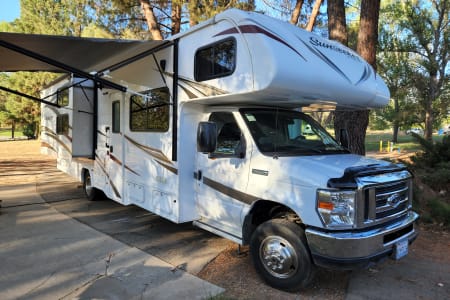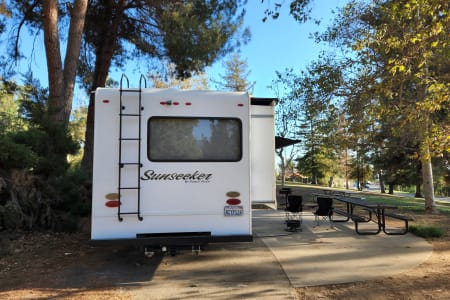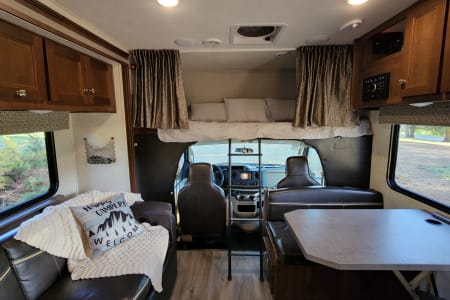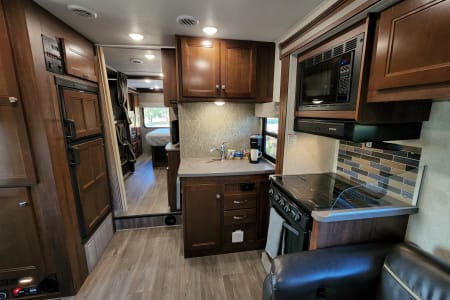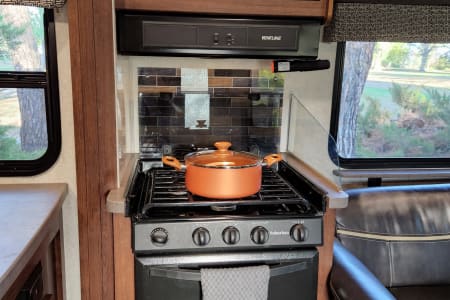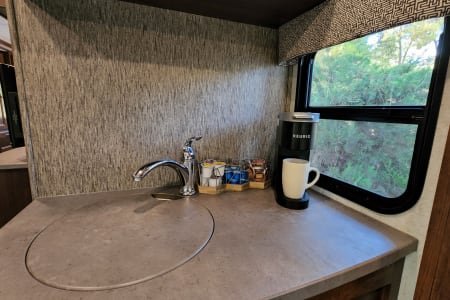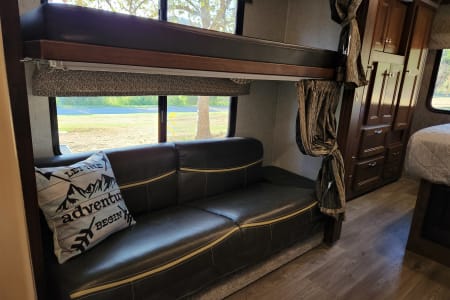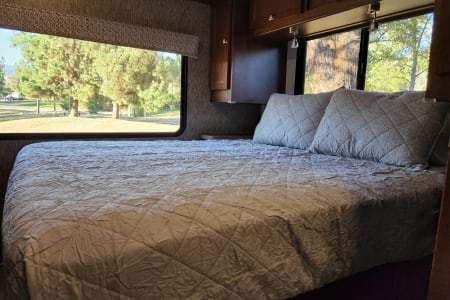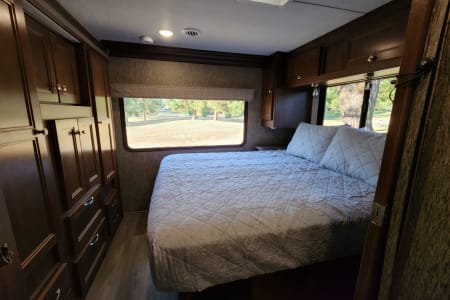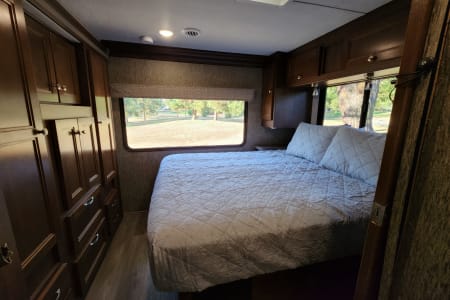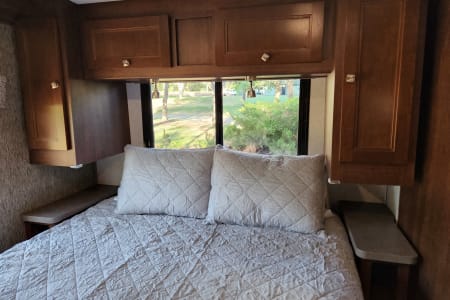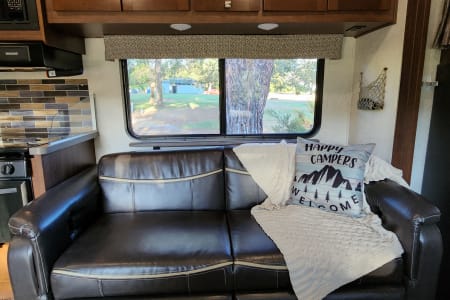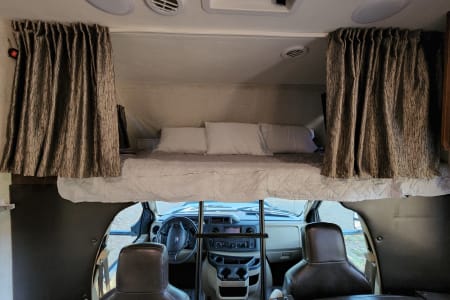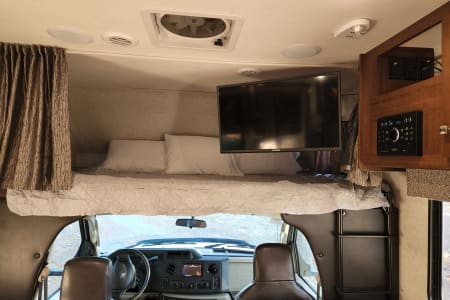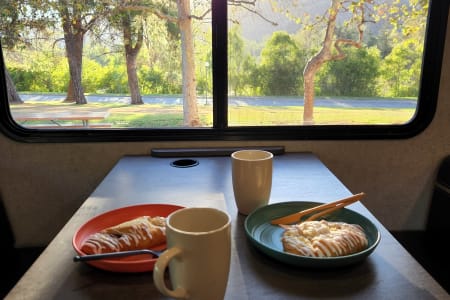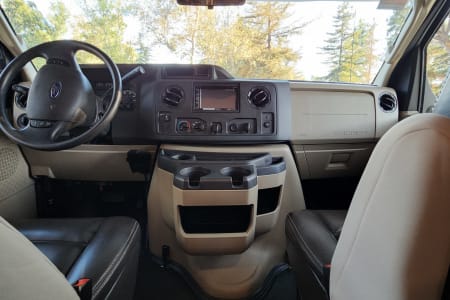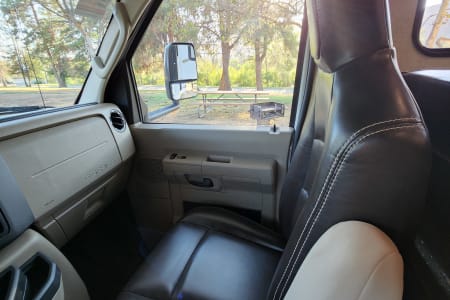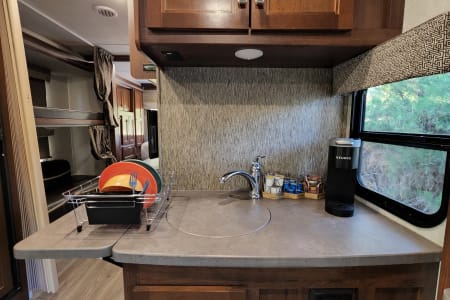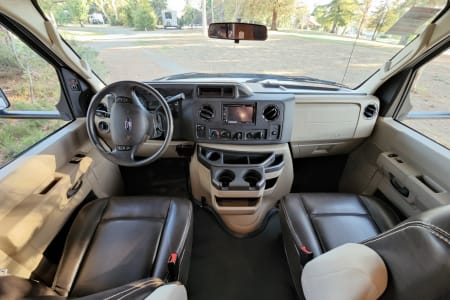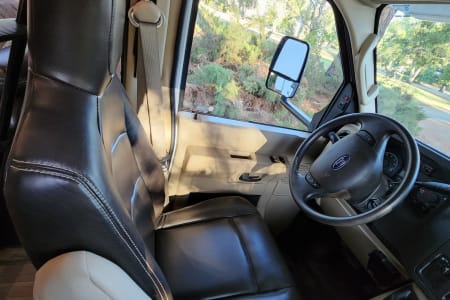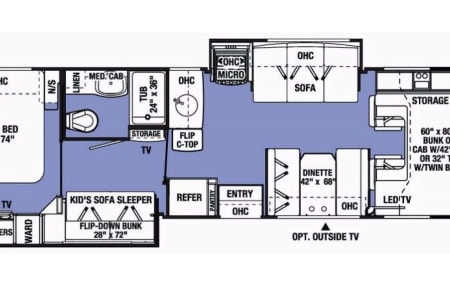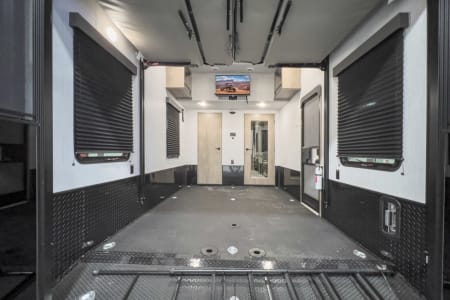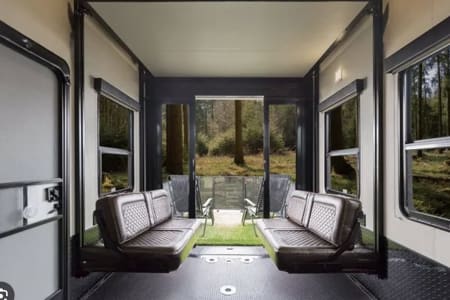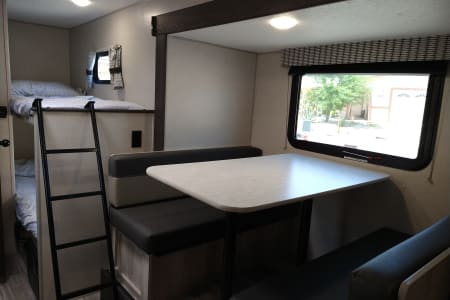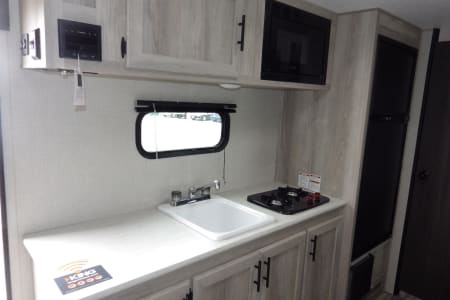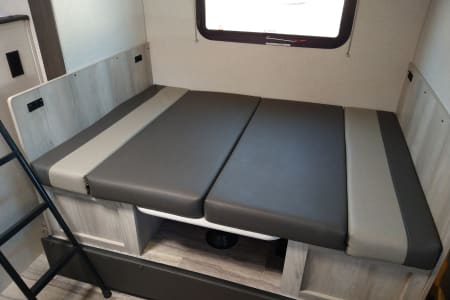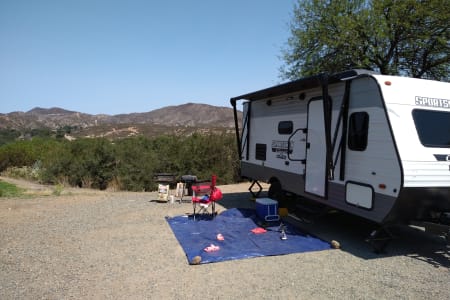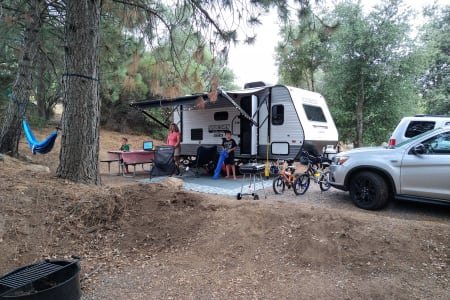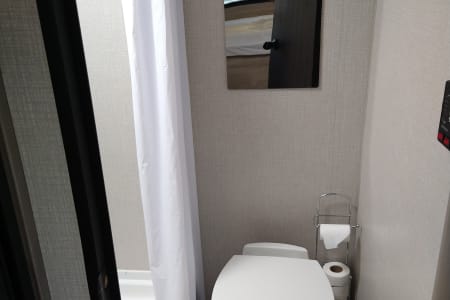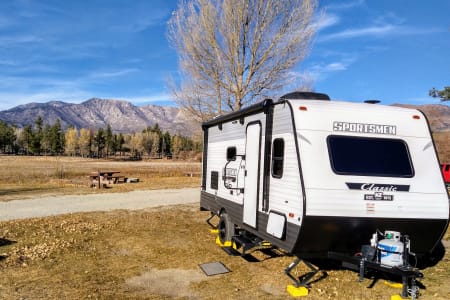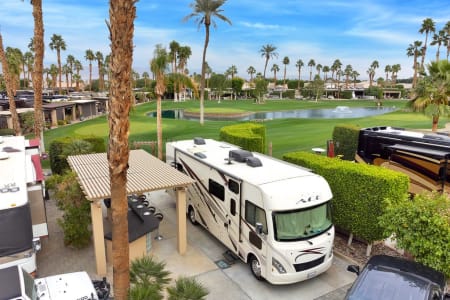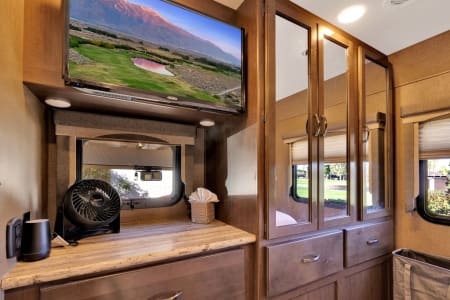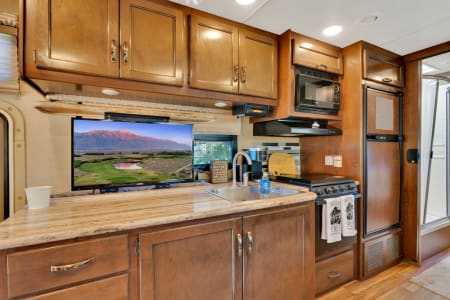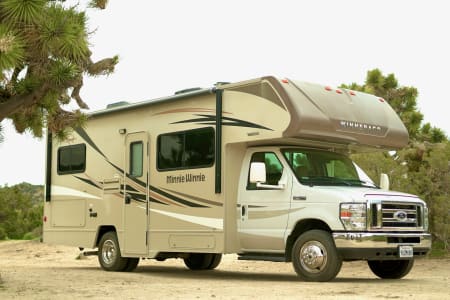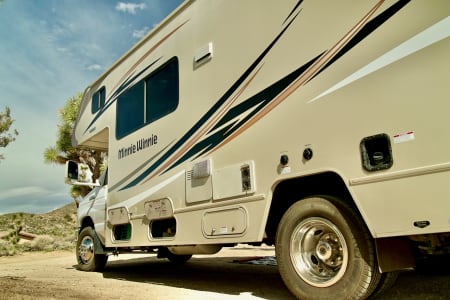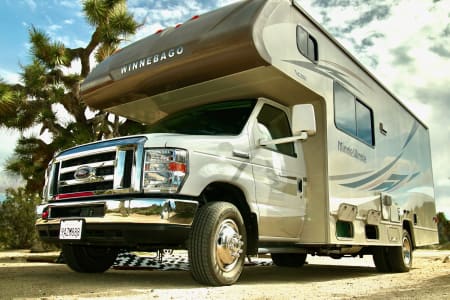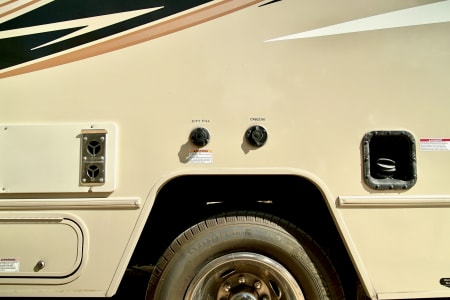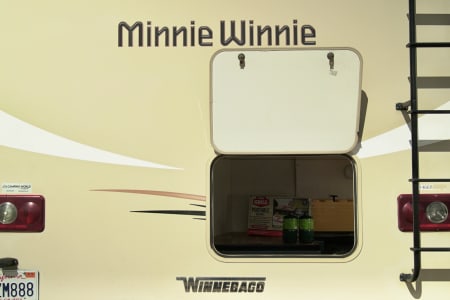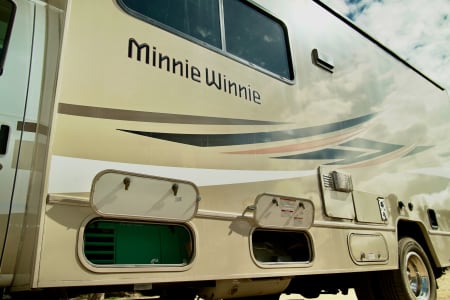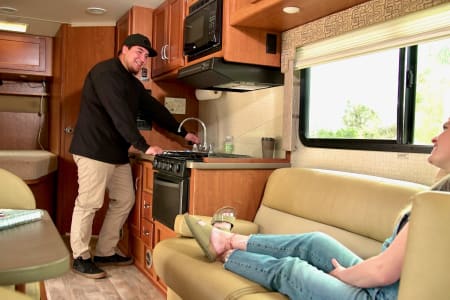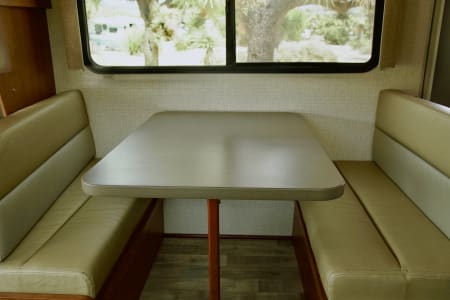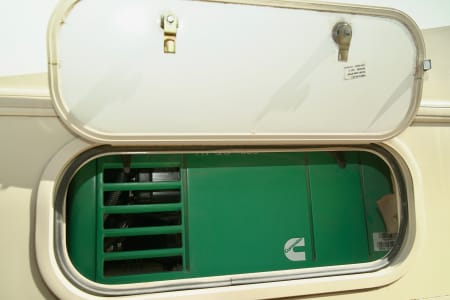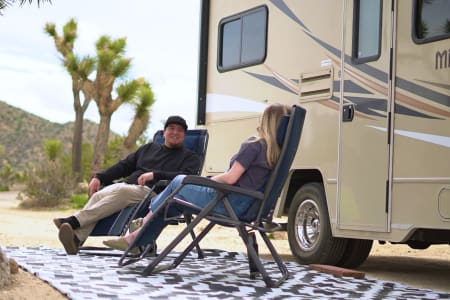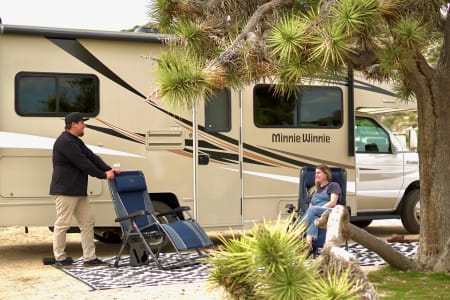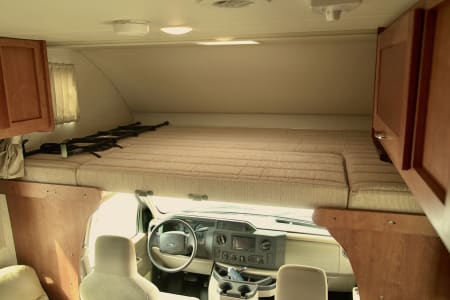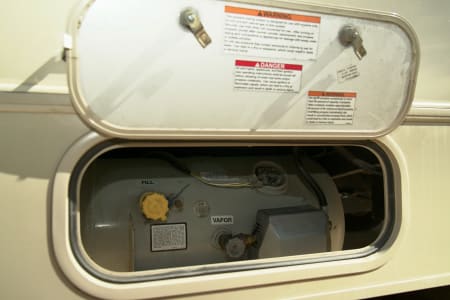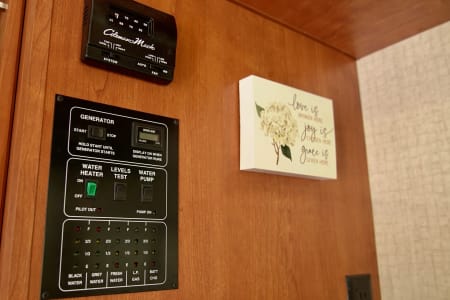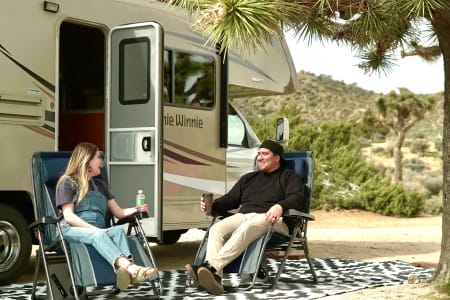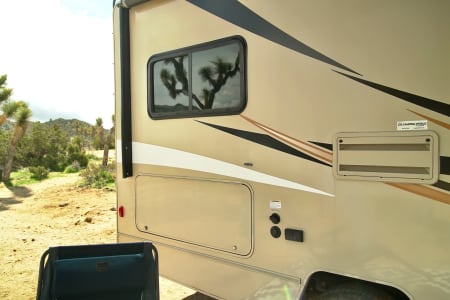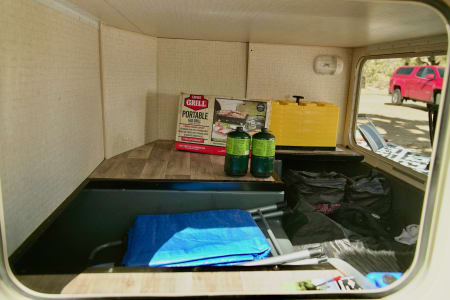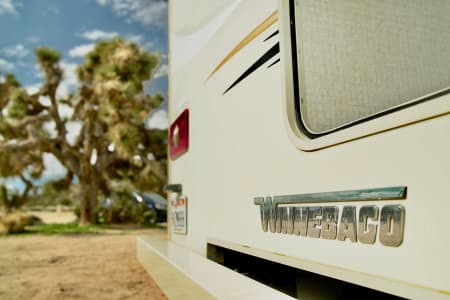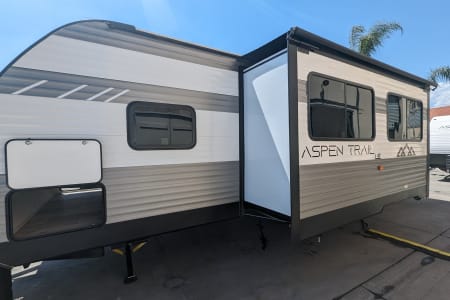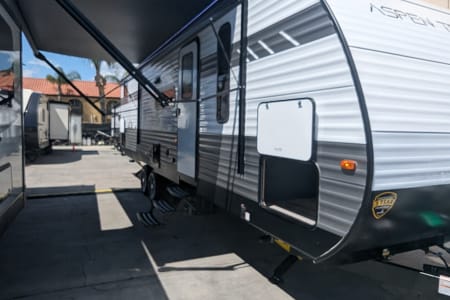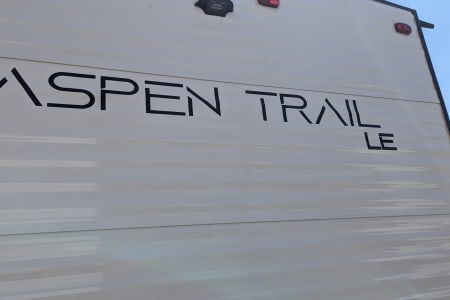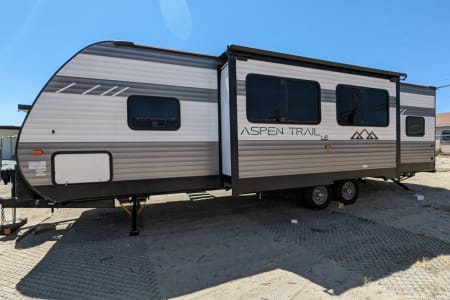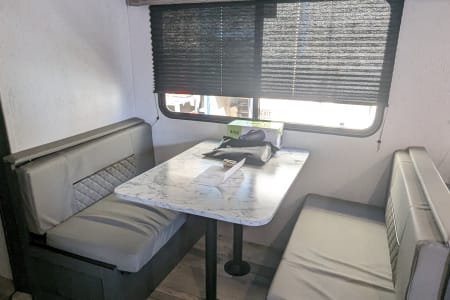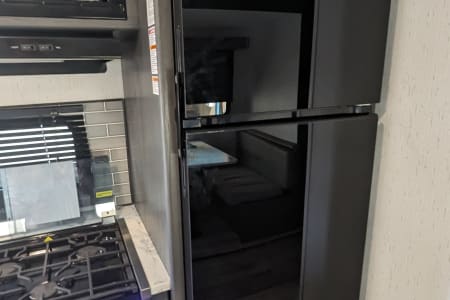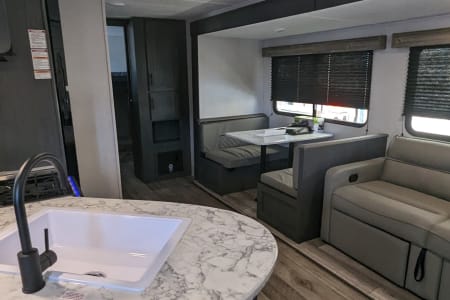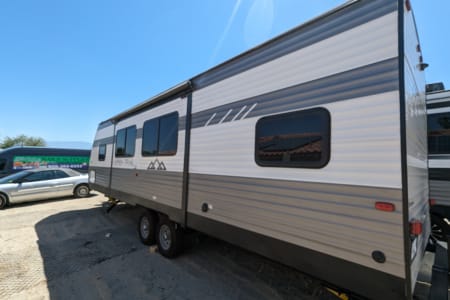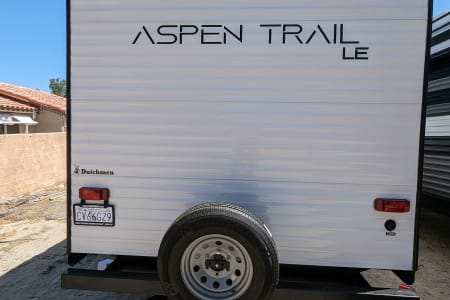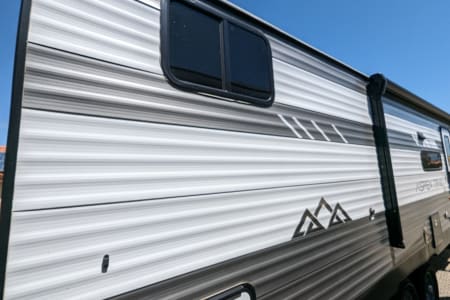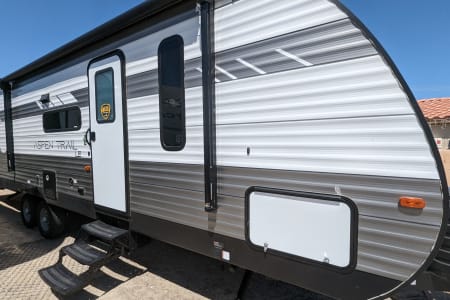Joshua Tree National Park California (CA) RV Rentals
RV Rentals Dates
Home / National & State Park Guides / National Park / Joshua Tree National Park
Looking for RV rentals, camper van rentals or travel trailer rentals near Joshua Tree National Park?
Introduction
Joshua Tree National Park is a popular destination for RV camping, and it’s not hard to see why. With its stunning desert landscapes, rich history, and unique natural features, this park offers a one-of-a-kind experience for visitors. In this blog post, we’ll delve into the reasons why Joshua Tree National Park is a great spot for RV camping, its historical and cultural significance, the natural occurrences that shaped its unique features, the weather conditions, precautions for RV renters, and the activities that can be enjoyed in the park. RV camping in Joshua Tree National Park provides a unique opportunity to immerse yourself in the beauty of the desert while enjoying the comforts of your own home on wheels. The park offers several campgrounds equipped with RV-friendly sites, complete with amenities such as picnic tables, fire pits, and restrooms. Wake up to breathtaking sunrises, explore the park’s hiking trails, and stargaze under the clear desert sky, all from the comfort of your RV. RVThereYet is an RV rental company, offering a diverse fleet of motorhomes, including Class A, Class B, and Class C Rentals, Travel, Trailers, and Motorhomes for unforgettable adventures in scenic RV parks and campsites in Joshua Tree National Park. Ensure early reservations for camper rentals at Joshua Tree National Park.
RV Rentals in Joshua Tree National Park
Coupon Code: RVTHEREYET - 10% Off
Coupon Code: RVTHEREYET - 10% Off
Coupon Code: RVTHEREYET - 10% Off
Coupon Code: RVTHEREYET - 10% Off
Coupon Code: RVTHEREYET - 10% Off
Coupon Code: RVTHEREYET - 10% Off
Coupon Code: RVTHEREYET - 10% Off
Coupon Code: RVTHEREYET - 10% Off
Transportation
-
Driving/Transportation
When visiting Joshua Tree National Park the primary mode of transportation is private vehicles. Visitors can access the park from multiple entrances including the Joshua Tree Visitor Center the Oasis Visitor Center and the Cottonwood Visitor Center. Each entrance provides access to different areas of the park allowing visitors to explore various trails and attractions. Private vehicles offer the flexibility to navigate the park at your own pace and stop at viewpoints and trailheads along the way. However it’s important to note that there are restrictions on rig sizes within the park. Vehicles longer than 25 feet and trailers longer than 40 feet are not recommended due to the park’s narrow and winding roads. So if you’re planning to visit Joshua Tree National Park hop in your private vehicle and get ready for an unforgettable adventure exploring the desert landscapes and unique features of this remarkable park.
-
Parking area
Joshua Tree National Park offers designated RV parking areas throughout the park making it convenient for RV owners to explore its attractions. However overnight parking outside of designated campsites is not permitted. It is highly recommended to camp with an RV in the park’s designated campgrounds as they provide the necessary amenities and facilities for a comfortable stay. While alternative transportation methods such as hiking and biking are popular for exploring the park having an RV allows for easy access to different areas and the flexibility to move around at your own pace.
-
Public Transportation
Joshua Tree National Park does not have public transportation or shuttle buses available for getting around the park. However there are several walking paths and hiking trails that visitors can utilize to explore the park on foot. These paths range in difficulty and offer opportunities to experience the park’s unique landscapes and attractions up close. Walking paths are a great way to immerse yourself in the beauty of Joshua Tree National Park and discover its hidden gems.
Top Campsites in Joshua Tree National Park
-
Reservations camping
Located just minutes away from the park’s entrance Joshua Tree Lake RV & Campground is a highly sought-after camping destination. With over 300 sites available it offers a range of options for RVs and tents. The campground features amenities such as full hookups hot showers a swimming pool and a convenience store. Activities include fishing in the lake birdwatching and hiking. The campground is pet-friendly and open year-round providing a convenient base for exploring Joshua Tree National Park. Situated within Joshua Tree National Park Black Rock Canyon Campground is a popular choice for nature lovers. It offers 99 sites suitable for RVs and tents with amenities including picnic tables fire rings and flush toilets. The campground provides easy access to hiking trails including the popular Hi-View Nature Trail. Pets are allowed but they must be kept on a leash. Black Rock Canyon Campground is open from October to May and can accommodate RVs and trailers up to 35 feet in length. Nestled in the northern part of Joshua Tree National Park Indian Cove Campground is known for its stunning rock formations and peaceful surroundings. The campground offers 101 sites for RVs and tents equipped with picnic tables and fire rings. Vault toilets and potable water are available on-site. Activities in the area include rock climbing hiking and wildlife viewing. Indian Cove Campground is pet-friendly and open year-round with RVs and trailers up to 35 feet permitted. Located in the southern part of Joshua Tree National Park Cottonwood Campground is a serene oasis surrounded by desert landscapes. It offers 62 sites for RVs and tents with amenities such as picnic tables fire rings and flush toilets. The campground provides access to hiking trails and is close to the Cottonwood Visitor Center. Pets are allowed but must be kept on a leash. Cottonwood Campground is open from October to May and can accommodate RVs and trailers up to 35 feet in length. These popular campsites offer a range of amenities and activities providing a comfortable and enjoyable camping experience for visitors to Joshua Tree National Park. Whether you prefer being close to the park’s entrance or immersing yourself in the heart of the park these campgrounds offer the perfect base for exploring the natural wonders of Joshua Tree.Joshua Tree Lake RV & Campground
Black Rock Canyon Campground
Indian Cove Campground
Cottonwood Campground
-
First-come first-served
Belle Campground is a first-come-first-served campground located in the northern part of Joshua Tree National Park. It offers 18 campsites available on a first-come first-served basis. The campground is open year-round providing camping opportunities in all seasons. It accommodates tents and small RVs or trailers up to 25 feet in length. Amenities include picnic tables fire rings and vault toilets. Belle Campground is pet-friendly allowing visitors to bring their furry companions along for the adventure. Situated in the central part of Joshua Tree National Park Ryan Campground is another first-come-first-served option. It offers 31 campsites that are available on a first-come first-served basis. The campground is open year-round providing camping opportunities throughout the year. It can accommodate tents and RVs or trailers up to 25 feet in length. Amenities include picnic tables fire rings and vault toilets. Ryan Campground is pet-friendly allowing visitors to bring their four-legged friends along for the camping experience. Hidden Valley Campground is a popular first-come-first-served campground located in the central part of Joshua Tree National Park. It offers 44 campsites available on a first-come first-served basis. The campground is open year-round providing camping opportunities in all seasons. It can accommodate tents and RVs or trailers up to 25 feet in length. Amenities include picnic tables fire rings and vault toilets. Hidden Valley Campground is pet-friendly allowing visitors to bring their pets along to enjoy the beautiful desert surroundings. These first-come-first-served campgrounds in Joshua Tree National Park offer a great option for spontaneous campers and those who prefer flexibility in their camping plans. Whether you choose Belle Campground Ryan Campground or Hidden Valley Campground you’ll have the opportunity to immerse yourself in the beauty of the park and enjoy a memorable camping experience.Belle Campground
Ryan Campground
Hidden Valley Campground
-
Alternate camping
If the campsites inside Joshua Tree National Park are full RV renters have alternative camping options available nearby. Here are a couple of options to consider There are several private campgrounds located near Joshua Tree National Park that offer RV camping options. These campgrounds often provide a range of amenities such as full hookups showers laundry facilities and recreational activities. Some popular private campgrounds in the area include Joshua Tree RV Park Desert Sands RV Park and Twentynine Palms RV Resort. While they may not offer the same proximity to the park’s attractions private campgrounds can still provide a comfortable and convenient base for exploring the area. For those seeking a more adventurous camping experience backcountry camping is an option near Joshua Tree National Park. The Bureau of Land Management (BLM) manages vast areas of public land surrounding the park where dispersed camping is allowed. RV renters can find suitable spots for boondocking and enjoy the solitude of the desert landscape. It’s important to note that backcountry camping requires self-sufficiency and adherence to Leave No Trace principles. Research BLM regulations and obtain any necessary permits before embarking on a backcountry camping adventure. These alternative camping options provide RV renters with flexibility and the opportunity to still enjoy the beauty of the Joshua Tree area even if campsites inside the national park are full. Whether you choose a private campground for added amenities or opt for backcountry camping for a more secluded experience you can still make the most of your RV adventure near Joshua Tree National Park.Private Campgrounds
Backcountry Camping
-
General activities
Hiking is one of the most popular activities in Joshua Tree National Park offering a multitude of trails for all skill levels. From easy nature walks to challenging treks hikers can explore the park’s diverse landscapes including iconic rock formations and breathtaking vistas. Popular trails include Hidden Valley Barker Dam and Ryan Mountain each offering unique experiences and opportunities to immerse oneself in the beauty of the desert. Joshua Tree National Park is renowned for its world-class rock climbing opportunities. The park’s granite formations and unique rock features attract climbers from around the globe. With routes suitable for all levels of expertise from beginners to seasoned climbers adventurers can test their skills and enjoy breathtaking views from atop the rocks. Popular climbing spots include Hidden Valley Jumbo Rocks and Echo Cove. Cycling enthusiasts will find plenty of opportunities to explore the park’s scenic roads and trails on two wheels. The park offers paved roads that are ideal for road biking as well as gravel roads and trails for mountain biking. Cyclists can enjoy the stunning desert landscapes encounter unique wildlife and experience the park’s tranquility on their bike adventures. Joshua Tree National Park is renowned for its dark skies making it a prime destination for stargazing. Away from city lights campers can marvel at the vast expanse of stars that illuminate the night sky. Key locations for stargazing include the Cottonwood Campground and the Keys View lookout point which offers panoramic views of the night sky and the surrounding desert. Nature enthusiasts will delight in the abundant wildlife that calls Joshua Tree National Park home. From desert bighorn sheep and coyotes to roadrunners and desert tortoises the park offers ample opportunities to observe and photograph these unique creatures in their natural habitat. Visitors can spot wildlife along hiking trails at watering holes or simply by keeping a keen eye during their explorations. These recreational activities in Joshua Tree National Park provide endless opportunities for outdoor enthusiasts to immerse themselves in the beauty and serenity of the desert. Whether you’re hiking among towering rock formations scaling cliffs cycling through scenic landscapes stargazing under the dark skies or observing wildlife in their natural habitat the park offers something for everyone to enjoy.Hiking
Rock Climbing
Biking
Stargazing
Wildlife Viewing
-
Alternative activities
Joshua Tree National Park is a visual wonderland offering stunning landscapes and unique geological formations. RV campers can embark on scenic drives through the park such as the Keys View Road which provides breathtaking panoramic views of the Coachella Valley and the San Andreas Fault. The Cholla Cactus Garden is another must-see with its dense concentration of beautiful cholla cacti creating a surreal and photogenic desert landscape. For those who prefer a more relaxed outdoor experience Joshua Tree National Park is a haven for nature watching. Visitors can observe the park’s diverse flora and fauna including the iconic Joshua trees wildflowers and various bird species. The park’s varied ecosystems provide opportunities to spot wildlife such as jackrabbits lizards and desert tortoises. Nature watching can be enjoyed along the park’s hiking trails from scenic overlooks or even from the comfort of your RV. Joshua Tree National Park is a paradise for photography enthusiasts seeking Instagram-worthy shots. The park’s unique rock formations Joshua trees and vast desert landscapes offer endless possibilities for capturing stunning images. Popular photo spots include Arch Rock Skull Rock and the famous Joshua Tree at the Joshua Tree Visitor Center. Sunrise and sunset provide the perfect lighting for capturing the park’s natural beauty. Joshua Tree National Park also offers cultural sites that provide insight into the area’s history and heritage. The Keys Ranch a historic homestead offers guided tours that allow visitors to step back in time and learn about the region’s pioneer history. The Oasis of Mara located near the Joshua Tree Visitor Center is a lush oasis with a rich Native American history offering a peaceful retreat and a glimpse into the past. RV campers can take part in ranger-led programs and activities offered by the park. These programs include guided hikes educational talks and stargazing events. Participating in these programs allows visitors to learn more about the park’s natural and cultural resources while engaging in fun and informative activities. These alternative recreational activities in Joshua Tree National Park provide a range of options for RV campers who may prefer a more relaxed or cultural experience. Whether you’re sightseeing enjoying nature watching capturing Instagram-worthy photos exploring cultural sites or participating in ranger programs Joshua Tree National Park offers unforgettable experiences for all types of outdoor enthusiasts.Sightseeing
Nature Watching
Instagram-Worthy Photo Opportunities
Cultural Sites
Ranger Programs
Season-specific experiences in Joshua Tree National Park
-
Spring activities
Spring brings a burst of color to Joshua Tree National Park as wildflowers bloom throughout the desert landscape. RV campers can witness this vibrant display by exploring the park’s various hiking trails such as the Hidden Valley Trail and the Barker Dam Trail. These trails offer opportunities to encounter a stunning array of wildflowers including desert marigolds lupines and Mojave asters. The Cholla Cactus Garden is another popular spot to witness the springtime bloom of cacti and other desert flora. As the weather warms up in spring RV campers can head to Keys View lookout for breathtaking panoramic views of the Coachella Valley San Jacinto Peak and the Salton Sea. Located at an elevation of 5 185 feet this popular viewpoint offers a stunning vista that stretches for miles. On clear days visitors can even catch a glimpse of the San Andreas Fault. Keys View is easily accessible by car with a short walk from the parking area to the lookout point. A unique and iconic landmark in Joshua Tree National Park Skull Rock is a must-see for RV campers. This fascinating rock formation resembles a skull and it’s a popular spot for photo opportunities. Located along the main road through the park visitors can easily park their RVs and take a short walk to explore and capture memorable pictures with this natural curiosity. History buffs will appreciate a visit to the Lost Horse Mine a historic site that provides a glimpse into the area’s mining past. RV campers can take a guided tour to learn about the mine’s operations and the hardships faced by the miners who worked there. The trail to the Lost Horse Mine is a moderate hike offering scenic views of the surrounding desert landscape. This historical landmark provides a fascinating insight into the region’s mining history and is a great educational experience for visitors. As temperatures rise in spring RV campers can seek refuge at the Cottonwood Spring Oasis. This serene and lush oasis provides a refreshing respite from the desert heat. Visitors can take a leisurely stroll along the nature trail which meanders through the oasis and showcases the diverse plant and animal life that thrives in this unique habitat. The oasis is easily accessible from the Cottonwood Visitor Center making it a perfect spot for a picnic or a peaceful nature walk. These recreational activities landmarks and historical sites in Joshua Tree National Park during the spring offer RV campers a chance to immerse themselves in the beauty of wildflowers enjoy panoramic views explore unique rock formations delve into the region’s mining history and discover a tranquil oasis. Springtime in Joshua Tree National Park is a delightful season for outdoor enthusiasts and history lovers alike.Wildflower Viewing
Keys View Lookout
Skull Rock
Lost Horse Mine
Cottonwood Spring Oasis
-
Summer activities
Summer nights in Joshua Tree National Park offer excellent opportunities for capturing stunning night sky photographs. With its dark skies and minimal light pollution RV campers can photograph the Milky Way constellations and even meteor showers. Popular spots for night sky photography include Keys View Arch Rock and the White Tank Campground. Campers can set up their tripods adjust their camera settings and capture breathtaking images of the celestial wonders above. Beat the heat of the day by embarking on early morning hikes in Joshua Tree National Park during the summer. RV campers can set out on the trails before the sun rises enjoying cooler temperatures and the beautiful sunrise over the desert landscape. Hikes such as the Hidden Valley Trail and the Ryan Mountain Trail offer stunning views and unique rock formations providing a memorable outdoor experience before the temperatures rise. Seek respite from the desert heat by visiting the park’s oases during the summer months. Places like the Cottonwood Spring Oasis and the Oasis of Mara offer shade cool breezes and a chance to observe the diverse plant and animal life that thrives in these lush environments. RV campers can take leisurely walks through the oases listen to the soothing sounds of flowing water and enjoy the contrast between the desert and these verdant havens. While summer temperatures can be scorching in Joshua Tree National Park rock climbing enthusiasts can still enjoy their favorite activity by seeking shaded climbing routes. Areas like Hidden Valley and Echo Cove offer shaded crags providing relief from the sun’s rays. Climbers can test their skills and experience the thrill of scaling the park’s unique rock formations while staying protected from the intense summer heat. Summer is a great time to observe wildlife in Joshua Tree National Park. As temperatures rise animals become more active in the early mornings and evenings. RV campers can keep an eye out for desert bighorn sheep coyotes roadrunners and other fascinating creatures that call the park home. Wildlife can be spotted along hiking trails near watering holes or even around the campgrounds. Observing and photographing these animals in their natural habitat can be a rewarding and memorable summer experience. These summer activities in Joshua Tree National Park offer RV campers a chance to engage in night sky photography enjoy early morning hikes visit oases climb in shaded areas and spot wildlife. While the summer heat can be intense with proper planning and precautions campers can still have exciting adventures and make the most of their time in this unique desert landscape.Night Sky Photography
Early Morning Hikes
Oasis Visits
Rock Climbing in the Shade
Wildlife Spotting
-
Fall activities
While Joshua Tree National Park is known for its desert landscapes the fall season brings a subtle change in colors to the park. RV campers can witness the golden hues of the Joshua trees and other desert vegetation as they transition into fall. Scenic drives along park roads such as Pinto Basin Road and Park Boulevard offer opportunities to admire the changing foliage and capture stunning photographs of the autumnal beauty. Fall is an ideal time for RV campers to explore the park’s hiking trails as temperatures become more moderate. Trails like the Lost Palms Oasis and the Barker Dam Loop provide scenic views and opportunities to observe wildlife. Hikers can enjoy the cooler weather vibrant colors and the tranquility of the park during the fall season. Fall is a prime season for birdwatching in Joshua Tree National Park as migratory birds pass through the area. RV campers can bring their binoculars and spot a variety of bird species including hawks eagles owls and various songbirds. Key locations for birdwatching include the Cottonwood Spring Oasis and the Barker Dam area where water sources attract a diverse range of avian visitors. Fall is a great time to explore the park’s cultural and historical sites. RV campers can visit the Keys Ranch a preserved homestead that provides insight into the region’s pioneer history. Guided tours offer a glimpse into the challenges faced by early settlers and the history of ranching in the area. Additionally visitors can explore the Joshua Tree Visitor Center which offers exhibits on the park’s natural and cultural resources including the iconic Joshua tree. Fall sunsets in Joshua Tree National Park are a sight to behold. RV campers can capture the vibrant colors and dramatic silhouettes of the desert landscape as the sun dips below the horizon. Key locations for sunset photography include Keys View where panoramic views of the Coachella Valley provide the perfect backdrop for stunning sunset shots. These fall activities in Joshua Tree National Park offer RV campers the chance to enjoy fall foliage embark on moderate temperature hikes engage in birdwatching explore cultural and historical sites and capture breathtaking sunset photographs. Fall is a beautiful season to experience the park’s unique charm and create lasting memories amidst the desert landscapes.Fall Foliage Viewing
Moderate Temperature Hikes
Birdwatching
Cultural and Historical Sites
Sunset Photography
-
Winter activities
Winter Hiking
Winter is a great time for RV campers to hit the hiking trails in Joshua Tree National Park. With milder temperatures hikers can explore longer and more challenging trails such as the Lost Horse Mine Trail or the Boy Scout Trail. The park’s unique rock formations desert flora and stunning vistas provide a picturesque backdrop for winter hikes. RV campers can enjoy the tranquility of the park and the crisp cool air as they immerse themselves in the natural beauty of the desert.
Stargazing
Winter nights in Joshua Tree National Park offer some of the best stargazing opportunities. With clear skies and reduced light pollution RV campers can marvel at the brilliance of the night sky. Key locations for stargazing include the Cottonwood Campground and the Keys View lookout point. Visitors can witness constellations shooting stars and the Milky Way creating a truly mesmerizing experience under the vast desert sky.
Photography
Winter in Joshua Tree National Park provides unique photographic opportunities. The contrast between the desert landscape and the snow-capped mountains in the distance creates a stunning visual spectacle. RV campers can capture the beauty of the park’s iconic Joshua trees against the backdrop of snowy peaks creating striking and memorable images. Key locations for winter photography include Arch Rock Cholla Cactus Garden and the Hidden Valley area.
Wildlife Spotting
Winter brings increased wildlife activity in Joshua Tree National Park. RV campers can spot a variety of animals including desert bighorn sheep coyotes and various bird species. The quieter park atmosphere allows for better chances of observing wildlife in their natural habitat. Visitors can keep their eyes peeled along hiking trails near water sources and in the early morning and late afternoon hours for the best wildlife viewing opportunities.
Winter Camping
RV campers can embrace the winter camping experience in Joshua Tree National Park. The park’s campgrounds offer a serene and peaceful atmosphere during the winter months with fewer crowds and more availability. RV campers can enjoy cozy campfires starry nights and the beauty of the desert landscape in its winter splendor. It’s important to note that winter camping requires proper preparation for colder temperatures including appropriate clothing gear and insulation for RVs.
These winter activities in Joshua Tree National Park provide RV campers with enchanting experiences including winter hiking stargazing photography wildlife spotting and winter camping. The park’s serene atmosphere and unique winter landscapes offer a chance to connect with nature and create unforgettable memories amidst the beauty of the desert in the winter season.









